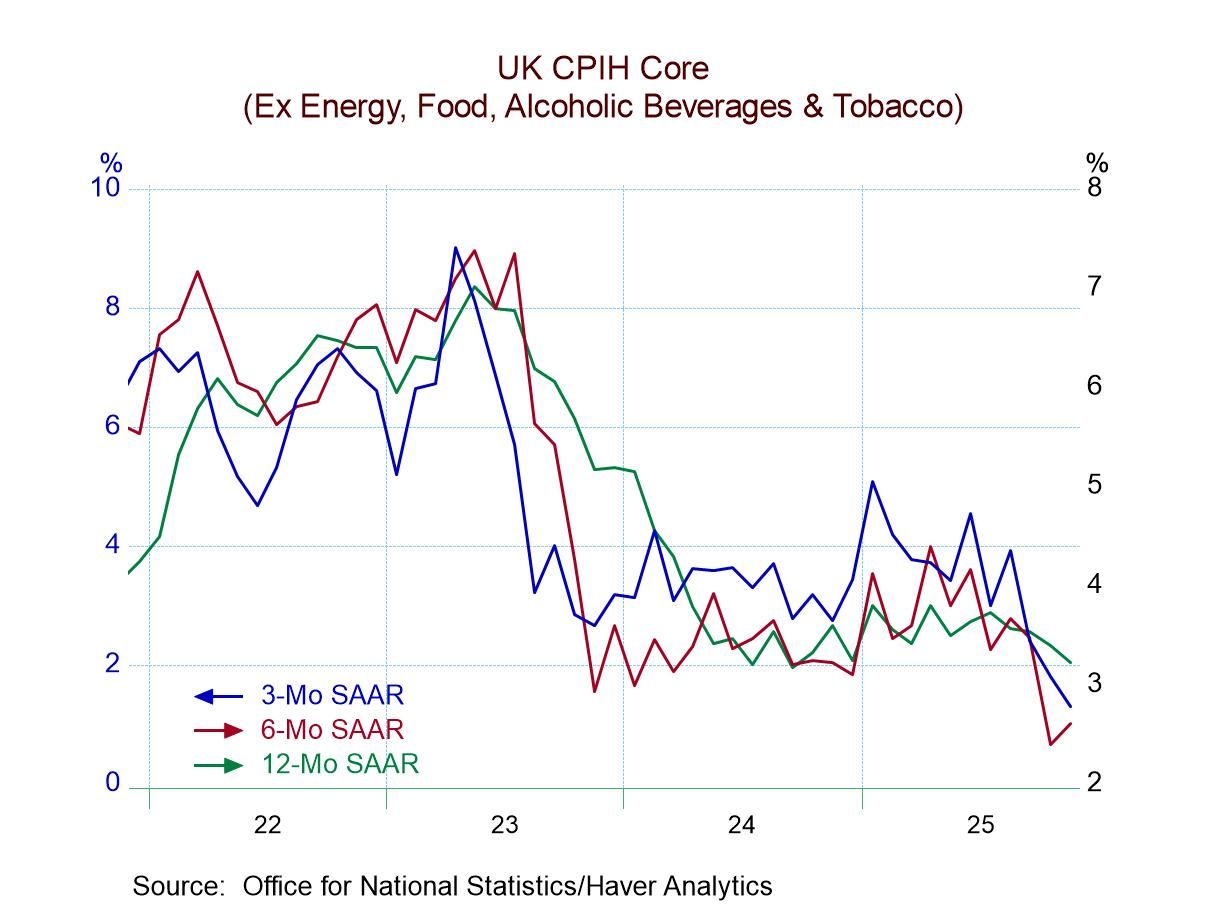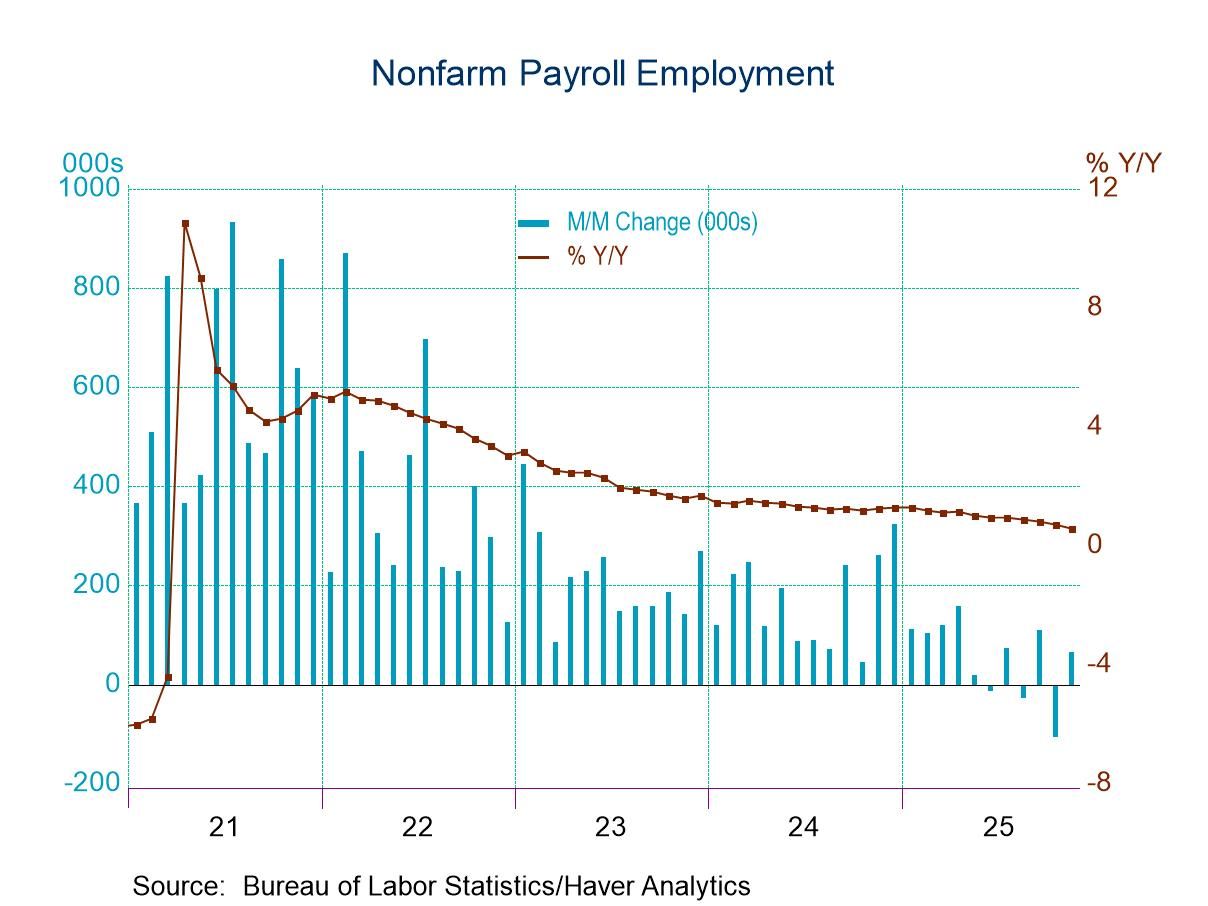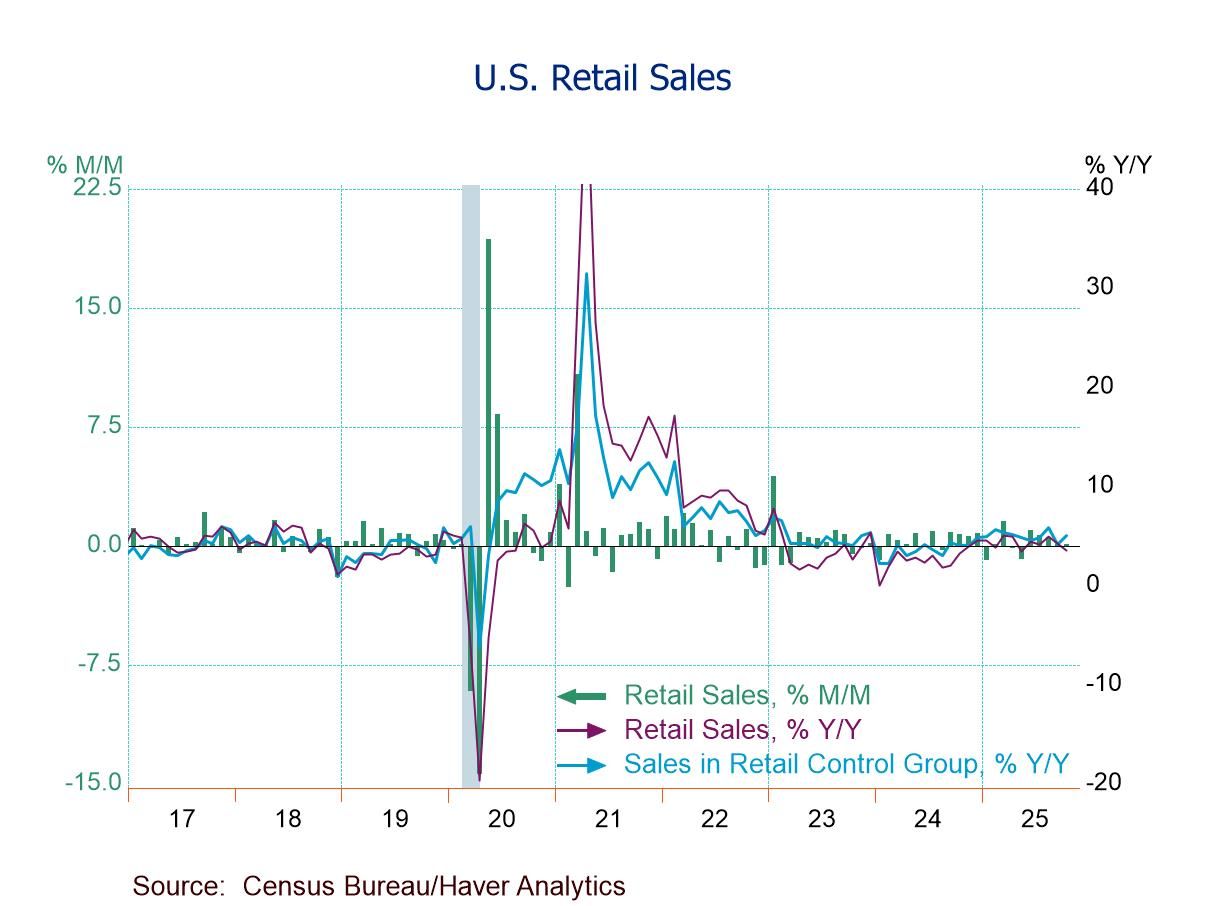 Global| May 16 2024
Global| May 16 2024Charts of the Week: Reversal of fortune
by:Andrew Cates
|in:Economy in Brief
Summary
A Fed easing narrative has been re-energized over the past few days largely thanks to a slightly weaker than expected US CPI report this week but, more generally, because of a battery of weaker-than-expected US data over the past couple of weeks. In our charts this week we examine the latest Blue Chip survey of economic forecasters and the corresponding signals suggesting that the light is now shining a little less brightly on the US economy (see chart 1). The same survey suggests the outlook is shining a bit more brightly on Europe’s economies, albeit from a position of relative darkness, and as equally indicated by the GDP growth outcomes for Q1 2024 (Chart 2). Germany, however, continues to be a notable underperformer, which prompts us to examine the latest data on industrial production across several major euro area economies and the persistent evidence of underperformance (Chart 3). Next, we turn our attention to this week's UK labour market data, which increasingly suggest that this market is loosening (Chart 4). We then shift focus back to the US economy, highlighting one of the reasons for its relative strength in recent months —namely, higher levels of immigration (Chart 5). Finally, we address inflation issues, and specifically the relatively rapid pace of global food price inflation in recent years (Chart 6).
Consensus GDP growth forecasts There has been a reversal of fortune in the world economy in recent weeks according to the latest Blue Chip survey of economic forecasters. The consensus forecasts for US GDP growth in 2024 was unchanged in May’s survey compared with April, at 2.4%. That’s the first time since July 2023 that US forecasters did not raise their growth expectations for this year. This stands in contrast moreover to the growth forecasts for the euro area and UK, which were lifted in May compared with April. The growth outlook for Japan in the meantime was left unchanged (see chart 1 below).
Chart 1: The evolution of consensus GDP forecasts for 2024 in major advanced economies

Outcomes for GDP growth in Q1 Those observations for Europe, unsurprisingly, chime with the early estimates for GDP growth in Q1. While the US economy still eked out a respectable growth rate of 0.4% q/q, that still marked its weakest pace of quarterly growth since 2022 Q2. The UK and euro area in the meantime chalked up respective growth rates of 0.6% and 0.3%, their fastest pace of growth since 2021 Q4 and 2022 Q3. That said, a bigger-than-expected contraction in Japan’s GDP of 0.5% in Q1, stands in contrast to the stabilization in growth expectations seen above. Weaker momentum in the US and stronger momentum in Europe, to be fair, partly reflect the underlying base from which the economy has shifted – i.e. a relatively strong base in the US and a weak base in Europe. Even so, these reversals of fortune are clearly worth monitoring in the coming weeks.
Chart 2: Quarterly GDP growth in Q1 2024 in selected major advanced economies

Germany’s under-performance Within Europe, nonetheless, the lingering under-performance of the German economy is another standout. One reason for this is the under-performance of activity in its industrial sector. In March 2024, for example, Germany’s industrial production was still around 9.5% lower than its pre-COVID level in January 2020. That compares with France, where production in March was some 4.2% lower than Pre-COVID levels, and Italy, where production was some 5.2% lower. Reasons for this under-performance are varied but they focus on the heavy reliance of Germany’s economy on manufacturing, amidst simmering global trade tensions and supply chain disruptions. Germany is also undergoing a major transition in its energy policy, which has led to increased dependence on imported energy, particularly natural gas from Russia. And that became extremely problematic especially after geopolitical tensions escalated.
Chart 3: Industrial production in Germany, France and Italy

The UK labour market Tuning back to the UK where this week’s labour market data have taken some of the shine away from its latest Q1 GDP report. These data showed another big fall in employment, albeit concentrated in the part-time sector, a further decline in job vacancies and another rise in the unemployment rate and accordingly speak to growing slack in the labour market. However, the data on wage growth were the proverbial fly in the ointment for the Bank of England. For instance, private sector regular pay rose by 0.6% month-over-month in March, following a 0.9% increase the previous month. These rates are arguably too strong for those on the BoE’s monetary policy committee who lean towards a more hawkish stance.
Chart 4: Employment and unemployment in the UK

US immigration As for the US, while it might now be underperforming, this follows a period during which, as Chart 1 above suggests, its economy had been significantly outperforming expectations. Various factors have contributed to this, including fiscal activism, technological innovation, and robust corporate balance sheets. However, another factor gaining recognition is immigration. For instance, new data from the CBO suggest that 3.3 million net immigrants arrived in the US in 2023. Through its impact on labour force growth, consumer spending, and housing activity, immigration could have provided far more support to overall economic growth in the US last year than many observers had initially realized.
Chart 5: US immigration visa issuance versus the labour force

Global inflation Finally and taking a step back from the ebb and flow of the monthly inflation cycle, our last chart this week looks at the latest annual inflation data for 2023 from the World Bank. More specifically, we home in on the relatively rapid pace of global food price inflation last year when compared with levels of energy price inflation or broader levels of core (ex food and energy) CPI inflation (see chart 6). Some of the key reasons for these high inflation rates in food prices include supply chain disruption amidst intensifying geopolitical tensions, together with a likely lagged impact from high energy prices in the previous year. But another key source of food price inflation is likely to have been climate change and more extreme weather conditions: Indeed, extreme weather events, including droughts, floods, and heatwaves, affected key agricultural regions around the world last year which, in turn, reduced crop yields and tightened global supplies of food commodities.
Chart 6: Global food and energy price inflation versus core CPI inflation

Andrew Cates
AuthorMore in Author Profile »Andy Cates joined Haver Analytics as a Senior Economist in 2020. Andy has more than 25 years of experience forecasting the global economic outlook and in assessing the implications for policy settings and financial markets. He has held various senior positions in London in a number of Investment Banks including as Head of Developed Markets Economics at Nomura and as Chief Eurozone Economist at RBS. These followed a spell of 21 years as Senior International Economist at UBS, 5 of which were spent in Singapore. Prior to his time in financial services Andy was a UK economist at HM Treasury in London holding positions in the domestic forecasting and macroeconomic modelling units. He has a BA in Economics from the University of York and an MSc in Economics and Econometrics from the University of Southampton.






